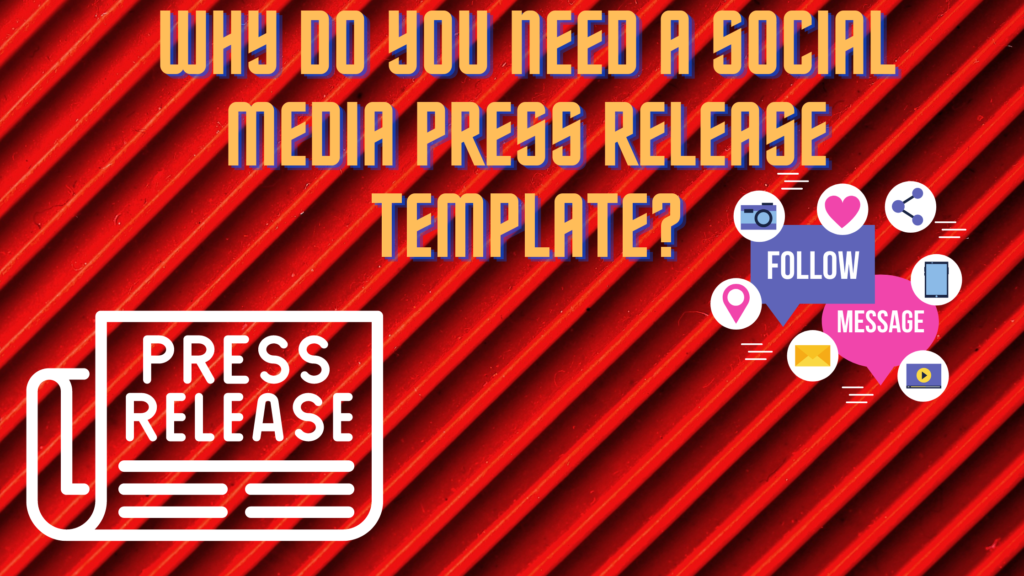
In today’s world, brands need to create their own buzz, especially for a product launch. Consumers no longer have to wait for the newspaper to receive the news. Instead, scan your headlines on Twitter, Facebook, and other social media outlets. One way to control the story surrounding your brand is to use press releases. Whether you’re sharing new product releases or organizational changes, regular delivery of meaningful news can help your company grab the limelight and attract the attention of journalists over time. These practices will improve your public relations too.
What are Press Releases?
Press releases are official “newsworthy” statements (written or recorded) issued by the organization in the news media and beyond. Even if we call them “press releases,” “press releases,” “press releases,” and “media releases,” we’re always talking about the same basics.
The heading should include action verbs, but the first paragraph should answer the questions “who,” “what”, “why”, and “where”. The press release should also include easy-to-understand words and citations. Most press releases are just below page 1-2 pages and cater to the target audience.
Ultimately, companies want to be well informed so that they have enough material to publish their articles about what the press has announced in their press releases. Please note that the press release is in the public domain. That is, stakeholders and customers can see them. Therefore, think of a press release as valuable marketing content, not as a ticket to get news coverage.
There is no one-size-fits-all formula for what to include in a press release, but there are several types of opportunities that can help establish the press release’s focus and determine the content that will help convey the message at its best.
How is it different from a Social Media Press Release?
So what makes social media press releases different from traditional press releases?
In addition to the text, social media press releases should include videos, images, and other things that may help influential people discover, share, and write about your story.
Also, unlike traditional press releases primarily aimed at journalists and industry players, these social media press releases are sent directly to consumers. Ultimately, this means that you want to compose your message compellingly by learning how to write a social media press release, rather than just stating the facts like a traditional press release.
The clear reality is this: Social media press releases are better than plain text releases. Social media press releases will be streamed live on the web in the online newsroom instead of pitch emails. This means that journalists and others can:
- Find press releases with a simple Google search
- Links to them
- Share on social media.
The resulting soaring view is not trivial. Two-thirds of social media press release hits come from social media and searches. You can also add multimedia to increase traffic further. Give the customers what they want. It’s a triple win:
They increase
- Your chances of getting your cover
- You gain the trust of your influential people.
- Your story will be more appealing to your readers
Needless to say, you can manage your story. Once your story is online, you can update it whenever you want. This means that no matter how often the main event is postponed, it won’t get old.
Difference between Social Media Press Releases and Regular Press Release
Social media posts are billed as posts to customers, not media. The basic idea is to deliver the news information directly to the customer rather than to share the news information through the media. And the service is right in this area. Few people press the retweet button on PRweb posts, but story-written articles with graphics and other multimedia content show even more interaction. Because the new audience influences the style of the release.
Social media releases differ in style because they are written like articles, not official press releases. Press releases are written to provide journalists with facts and information, so journalists can quickly create their own stories based on the facts we provide. Regular publications convey facts quickly and can often come off as dry, but you must do so to get the angle that journalists want.
Elements in a Social Media Press Release template
If you decide that you need to write a press release that includes social media, it’s not difficult to figure out what’s essential to have if you understand traditional outs. The following must be contained in a social media press release.
- Headline: As it says focus on brevity. Understand the point and don’t try to be creative. Some keywords do the job.
- Secondary heading: If you have very important information that users will continue to read, please post it here. Otherwise, jump to the overview.
- Overview of the post: A brief overview of the release and what to cover. This is where you get hooked or lost, so keep it under two paragraphs, use keywords, and think of every sentence.
- The body of the release: So-called publication meat, it should be news. Don’t throw prejudice here. Simply state the facts of what you are presenting (think like a journalist, who, when, what, where, why and how to cover).
- Facts and data: Some statistical data or bullet points are needed to support the claim form above. This information should be easy to share with others, so if someone wants to get this out of your post right away, you can.
- About your business: A straightforward company biography that includes links to your website, Twitter feed, and Facebook fan page.
- Media links: The social aspects of your post should include YouTube videos, images, RSS feeds, and more. You don’t want people to hesitate in your message, you want to be seen as a helpful resource.
- Other relevant links to your business: It’s a great way to promote your business and what you’ve done a bit more. If you have related publications, please add links to them here. Even if that particular product may not suit you, your other products may still be useful if you have been intrigued by someone for a long time.
- Use tags: Recommended sharing methods such as social bookmarking sites, Twitter hashtags, Facebook fan pages, etc.
- Provide your contact details: This can be overlooked, but don’t forget to include your name, email address, Twitter alias, etc. Publishing all that information and being willing to stand behind your post gives it a little more credibility.
Common Mistakes while drafting a good Press Release
While the elements you’re focusing on are relatively consistent, some can quickly turn social media posts into one-off visits from junk emails, journalists, clients, and bloggers. These errors are:
- Publications are too focused on your business, not your products or services. When a user wants to visit your website, let them know about your company.
- Content is not entertaining/shareable and is loaded in marketing terms
- Written to appeal to a wider base of viewers on the Internet, not specific bloggers or consumers.
Distribution of a Social Media Press Release
Distribution is clearly important to the success of traditional press releases. There are many free and paid services for PR professionals, but it depends on the reach you want to get from the campaign. Looking for local or national coverage? Do you want a blogger or a traditional journalist? Is it a one-time hit or a viral campaign? These are all the questions that you need to ask yourself before you start distributing.
Refer to this link for a Social media press release template


